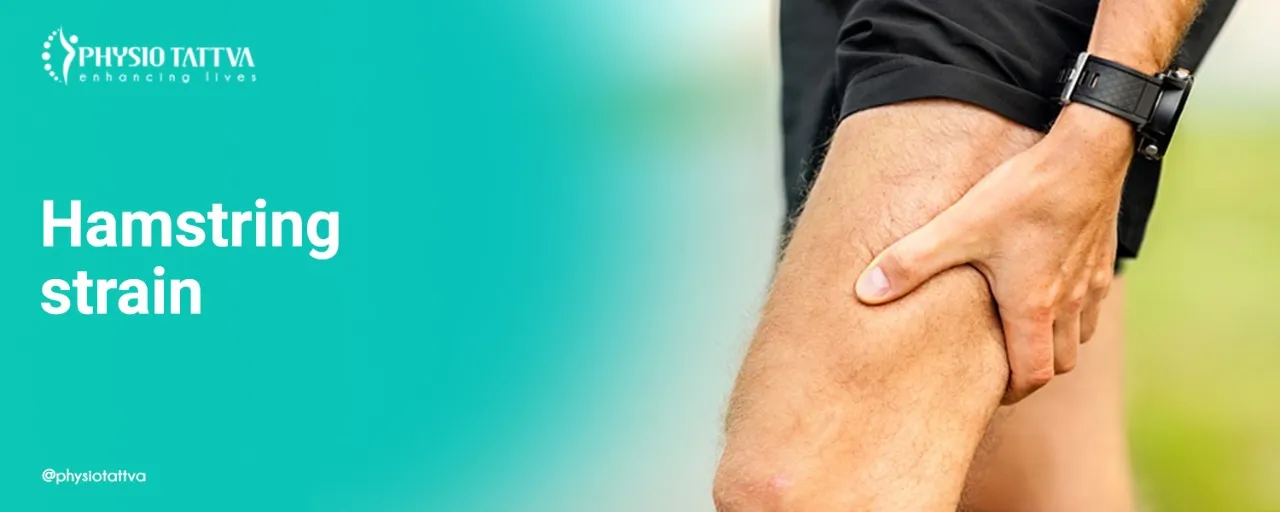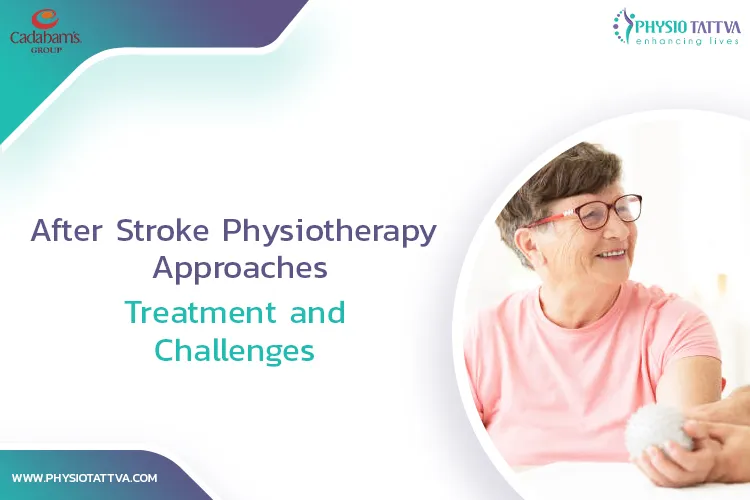Discover the Healing Power of Laser Therapy
Laser therapy in physiotherapy is a modern, non-invasive treatment that uses a focused beam of light to stimulate tissue healing and manage pain and inflammation. "LASER" stands for "Light Amplification by Stimulated Emission of Radiation." The energy from the laser therapy penetrates the skin, targeting affected tissues and triggering biological responses that promote healing and regeneration.
This innovative therapy is widely used in orthopaedics, dentistry, dermatology, veterinary medicine, and sports injury recovery. Conditions commonly treated include arthritis, carpal tunnel syndrome, fibromyalgia, back pain, tendonitis, wounds, and more.
With its painless application and minimal side effects, laser physiotherapy is transforming how we approach pain management and rehabilitation.
Types of Laser Therapy
Medical laser therapy is broadly categorised into two types: low-level laser therapy (LLLT) and high-intensity laser therapy (HILT).
Low-Level Laser Therapy (LLLT): This method uses a diode or semiconductor laser to activate tissue at a cellular level. It encourages healing by promoting the release of nitric oxide and endorphins, which help ease pain, reduce inflammation, and support muscle relaxation and tissue repair.
High-Intensity Laser Therapy (HILT): HILT operates with a higher-powered laser that generates heat to target and break down damaged tissue. It’s frequently used in dermatological procedures such as scar reduction and reversing sun damage. In dentistry, HILT assists in tasks like cavity removal and preparing surfaces for fillings.
Laser therapy devices commonly used in these treatments include CO₂, Er: YAG, and Nd: YAG laser systems.
Mechanism Differences: Low-Level vs High-Intensity Laser
While both Low-Level Laser Therapy (LLLT) and High-Intensity Laser Therapy (HILT) are used in physiotherapy, their mechanisms and applications differ significantly.
- Low-Level Laser Therapy (LLLT): This technique uses low-intensity light that is safe for direct skin application. It works by stimulating cellular activity, promoting tissue repair, and reducing inflammation without generating heat. Laser physiotherapy sessions using LLLT are ideal for treating soft-tissue injuries, joint pain, and inflammation management.
- High-Intensity Laser Therapy (HILT): HILT delivers higher energy levels that produce mild heat, allowing deeper tissue penetration. This method is commonly used for chronic pain, deep muscle injuries, or surgical procedures where tissue ablation is needed. The thermal effect enhances circulation and accelerates healing, making HILT a key component of advanced laser therapy treatment in physiotherapy.
Together, both forms of laser therapy in physiotherapy play complementary roles- with LLLT focusing on cellular healing and HILT providing deeper, more intensive therapeutic benefits.
How Does Laser Therapy Work in Physiotherapy?
In laser physiotherapy, light energy penetrates deep into tissues without damaging the skin surface. It accelerates cellular repair, improves blood circulation, reduces inflammation, and releases endorphins that provide natural pain relief.
Whether it's for musculoskeletal injuries, chronic pain, or post-operative recovery, laser treatment physiotherapy plays a vital role in speeding up healing and restoring function.
Procedure: What to Expect During Laser Therapy
The laser therapy procedure typically involves:
- Identifying the affected area.
- Cleaning and preparing the skin.
- Using a handheld laser device to deliver light energy to the targeted tissues.
- Sessions last between 10 to 30 minutes, depending on the severity of the condition.
During the treatment, you may feel a gentle warmth or tingling sensation, but it is generally painless.
Benefits of Laser Therapy and How Physiotherapy Helps
Laser therapy offers a wide range of therapeutic benefits, particularly when combined with physiotherapy. This powerful combination not only accelerates recovery but also improves treatment outcomes for various acute and chronic conditions.
Accelerated Tissue Repair and Enhanced Circulation
Laser therapy promotes faster tissue healing by increasing ATP (adenosine triphosphate) production, which fuels cell repair and regeneration. It also stimulates new capillary formation, improving vascular activity and oxygen supply to damaged tissues. These processes enhance metabolic function and speed up recovery after injury or surgery.
Pain Relief
Laser therapy stimulates the release of natural pain-relieving chemicals in the body while reducing pro-inflammatory substances. It is especially effective in managing chronic pain, sports injuries, shoulder pain, arthritis, and neuromuscular disorders. Physiotherapists often combine it with exercises and manual therapy for more comprehensive pain management.
Inflammation and Swelling Reduction
By enhancing blood flow and cellular activity, laser therapy reduces inflammation and swelling in muscles, joints, and soft tissues. It aids in the drainage of toxins, which accelerates tissue repair. This is particularly helpful in conditions like bursitis, tendonitis, and post-surgical inflammation.
Improved Healing in Osteoporosis
In patients with osteoporosis, laser therapy may support cellular regeneration and improve bone density by stimulating osteoblastic activity. When integrated into a physiotherapy regimen, it helps manage pain, reduce fracture risk, and improve mobility.
Enhanced Skin Health and Rejuvenation
Laser therapy also contributes to skin repair by targeting acne, scars, warts, and moles. In physiotherapy, it is often used for post-injury scar management or to support skin healing after burns or abrasions.
Quick, Comfortable, and Non-Invasive Procedure
Laser therapy is a completely non-invasive and comfortable procedure. There is no sound, vibration, or heat during treatment, making it safe even for sensitive patients. Each session typically lasts just a few minutes, depending on the condition being treated. This quick, painless process ensures effective results without any downtime, helping patients feel relaxed and confident throughout their recovery.
Versatility Across Conditions
Laser therapy is effective for a wide range of issues, including:
Physiotherapists tailor laser therapy to a patient’s specific condition, combining it with movement-based treatments to maximise recovery. Whether addressing pain relief, inflammation control, or mobility restoration, physiotherapy ensures that laser treatment is part of a holistic, patient-centred care plan.
Therapeutic Applications and Conditions Treated with Laser Therapy
Laser physiotherapy is highly effective for treating both acute and chronic musculoskeletal conditions. It enhances healing, reduces inflammation, and offers lasting pain relief. Below are some of the common conditions treated through laser therapy treatment:
Tendonitis
- Reduces inflammation and tendon pain through improved circulation.
- Stimulates collagen production for faster recovery.
- Helps restore mobility when combined with physiotherapy exercises.
Carpal Tunnel Syndrome
- Decreases nerve compression and relieves wrist pain.
- Enhances tissue healing and reduces tingling or numbness.
- Works best when paired with laser therapy in physiotherapy sessions.
Fibromyalgia
- Eases widespread muscle pain and fatigue.
- Boosts oxygen flow and reduces muscular stiffness.
- Promotes relaxation and better sleep quality.
Rheumatoid Arthritis
- Reduces joint inflammation and stiffness.
- Supports cartilage health and joint flexibility.
- Provides safe, drug-free pain relief through laser physiotherapy.
Osteoarthritis
- Stimulates cell regeneration and joint lubrication.
- Decreases pain and swelling in affected joints.
- Improves mobility with continued laser therapy treatment.
Post-Surgical Recovery
- Minimises swelling and scar tissue formation.
- Speeds up healing and restores strength.
- Works effectively as part of laser therapy in physiotherapy rehabilitation.
Other Conditions
- Ligament sprains and muscle strains
- Bursitis and joint inflammation
- Neck and lower-back pain
- Chronic arthritis and soft-tissue injuries
Precautions for Laser Therapy in Physiotherapy
While laser therapy is safe, certain precautions are necessary:
- Protective eyewear must be worn during the session.
- Avoid open wounds unless treated specifically for wound healing.
- Disclose any medications, especially light-sensitive drugs.
- Pregnant women and patients with active cancer lesions should avoid therapy unless advised.
Following these guidelines ensures the safe and effective use of laser physiotherapy.
Potential Risk Factors of Laser Therapy
While laser therapy is generally considered a safe and effective treatment option, there are potential risks associated with its use. Some of the potential risks of this therapy include the following:
- Skin irritation or burns from exposure to the laser
- Eye damage or vision loss from exposure to the laser
- Increased risk of skin cancer with repeated exposure to the laser
- Risk of infection if the laser is used to treat an open wound or infection
To minimise laser therapy risks, choose a qualified provider, follow post-treatment care instructions, and use it in appropriate circumstances. Laser therapy is safe and effective with a qualified provider.
Future Research & Emerging Uses
While current applications of laser therapy in physiotherapy focus on pain relief, tissue healing, and inflammation control, emerging research is expanding its potential. Scientists are now exploring laser therapy treatment for neurological recovery, including traumatic brain injury, spinal cord injury, Alzheimer’s disease, and Parkinson’s disease.
Preliminary findings suggest that targeted light stimulation may support neuroregeneration, improve cellular metabolism, and reduce inflammation in damaged neural tissues. Though still under study, these advancements show promising directions for the future of laser physiotherapy, potentially transforming how we approach complex neurological rehabilitation and chronic conditions.
Choosing the Right Laser Therapy Doctor: What to Look For
Laser therapy can be highly effective, but finding the right doctor to perform the procedure is important. To find a good doctor for laser therapy:
- Consider their credentials, experience, reputation, technology, and communication skills.
- Don't settle for just anyone - choose a licensed and experienced professional who uses the latest technology and equipment.
At-Home Laser Devices & Consumer Caution
While portable laser devices are increasingly available for home use, it’s important to approach them with caution. Laser therapy treatment requires precise control over intensity, wavelength, and exposure time, factors that vary by condition. Using unregulated or low-quality at-home devices can lead to skin burns, ineffective results, or delayed recovery.
For safe and effective results, it’s best to undergo laser physiotherapy under the supervision of certified professionals. Physiotherapists can personalise your laser therapy in physiotherapy sessions based on diagnosis, ensuring optimal healing and avoiding complications from improper use.
How to Prepare for Laser Therapy
Although the procedure is safe, you will need some basic preparations before therapy. The common preparations include:
- Plan to provide enough time for recovery after the surgery.
- Arrange for people who can assist you back home after the procedure. You may still be under the influence of general anaesthesia.
Consult the physician to ensure stopping the regular medications at the right time before the treatment. It will otherwise affect blood clotting, especially when the medicines contain blood thinners.
Cost and Insurance Considerations
The cost of laser therapy in physiotherapy across India usually ranges from ₹1,000 to ₹3,000 per session, depending on the area being treated, laser intensity, and overall treatment duration. Since laser physiotherapy often requires multiple sessions for lasting improvement, your physiotherapist will recommend a suitable plan based on your condition and goals.
In India, insurance coverage for physiotherapy treatments like laser therapy may be limited. Most insurers reimburse only when therapy is prescribed for post-surgical or doctor-recommended rehabilitation. Patients are encouraged to confirm coverage directly with their insurance provider before starting treatment.
At Physiotattva, we ensure clear pricing, flexible session plans, and guidance on documentation to help you make informed, stress-free decisions about your laser therapy treatment.
Why Choose Physiotattva for Laser Therapy in Physiotherapy?
At Physiotattva, we offer advanced, personalised laser therapy services with:
- Certified and experienced physiotherapists.
- State-of-the-art laser technology.
- Tailored treatment plans combining laser physiotherapy with exercise and manual therapies.
- Patient-centred care focused on recovery, comfort, and long-term health.
Explore our physiotherapy services here.
Trust Physiotattva for your laser treatment physiotherapy needs — where healing begins with expertise and compassion.
Experience the Benefits of Laser Therapy: Book Your Appointment Today
If you're looking for an effective, non-invasive solution for pain, injury recovery, or chronic conditions, laser therapy at Physiotattva is your answer. We tailor each plan to your unique needs, helping you return to a healthier, more active life.
At Physiotattva physiotherapy clinics in Bangalore and Hyderabad, you receive personalised care tailored to your specific needs, ensuring effective results and comfort throughout your journey to recovery.
Don’t wait to start your recovery! Get in touch with Physiotattva for more details! Contact us at +91 89510 47001.


.webp)

-Physiotherapy.webp)
-for-Shoulder-Pain-Relief.webp)
-for-Knee-Pain-Relief.webp)


-for-Back-Pain-Relief%20(1).webp)





.webp)











.webp)


.webp)





.webp)
.webp)


.webp)

.webp)

.webp)

.webp)
.webp)

.webp)








.webp)
.webp)


.jpeg)


.webp)

.webp)




.webp)
.webp)












.png)









%20(1)-p-3200.jpeg)


.jpg)
.webp)
.webp)
.webp)




